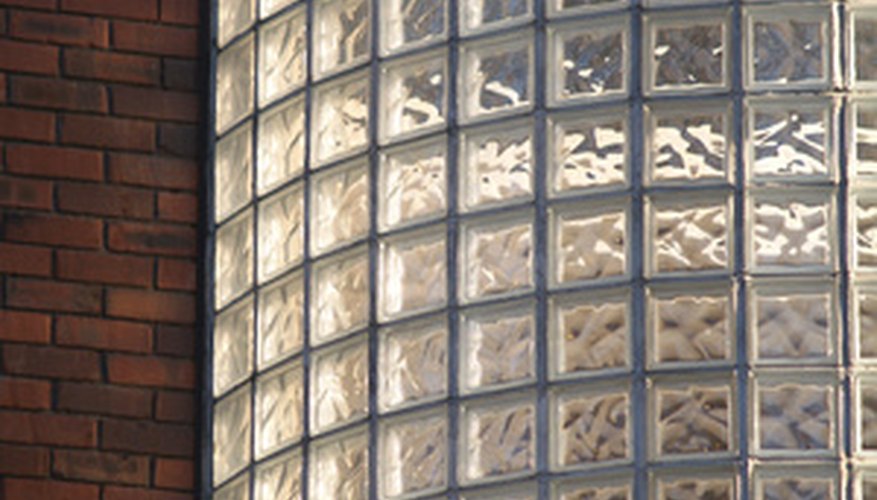Glass block is very thick, usually square, hollow blocks made of glass. It is used for shower enclosures, kitchen countertop support, wall inserts that allow light while maintaining privacy and, increasingly, as a postmodern building material by cutting-edge architects. Glass-block grids can double as digital light-show artwork. The material is strong enough for exterior walls and for floors. And a lighter version is a composite that adapts to home decorating use.
LED Through-Wall Display
One light artist turned a glass block, window-sized panel in an exterior wall into an interactive light display. The plain glass bricks are rigged with individual coloured LED lights and connected to a computer program that reacts to a motion sensor. When someone outside the house walks past the wall, the program reacts by changing the lights in a grid. This is a terrific novelty, not a great do-it-yourself project unless you are an engineer. LED lights are also quite bright, so any facing neighbours should be considered. A simpler adaptation of the idea might be to flood the glass blocks from the inside of the house with a single coloured light on a dimmer so intensity level can be controlled. It would still be an original and arresting wall, but it would work more like an exterior lighting feature and less like Times Square.
- One light artist turned a glass block, window-sized panel in an exterior wall into an interactive light display.
- A simpler adaptation of the idea might be to flood the glass blocks from the inside of the house with a single coloured light on a dimmer so intensity level can be controlled.
Architectural Innovation
Pritzker Prize-winning architect Tadao Ando uses glass panels and glass block in his spare, contemporary designs to blur the boundaries between indoors and out with light. He creates framed glass-block panels for the interior and exterior walls of museums, private homes and churches. In several notable Ando-designed homes in Japan, glass block is used as an alternative to the traditional paper and bamboo shoji screens that form interior walls. Ando's inspiration for creative use of the material came from the famous Maison de Verre by Pierre Chareau, a 1931 renovation of a 19th century, Parisian town house. The Maison de Verre has an entire exterior structural wall made of glass block to let light into the closed-in house. More light pours from top to bottom floors through glass block floors. Chareau was the first to exploit dramatic alternatives to the traditional use of glass block. He continues to find new applications for the tough, translucent and relatively inexpensive material.
- Pritzker Prize-winning architect Tadao Ando uses glass panels and glass block in his spare, contemporary designs to blur the boundaries between indoors and out with light.
Ideas for Acrylic Blocks
A lightweight, flexible alternative to glass block is an acrylic-block wall or panel. Acrylic is 70 per cent lighter than glass, so it's easier to manipulate and ideal for any area where weight is a concern. The blocks can be ordered in an assembled frame or custom-connected by polymer clips. They come in different sizes and colours, are scratch- and fade-resistant and hermetically sealed against condensation. Acrylic blocks could be used to separate rooms in a vacation cottage, without diminishing any light. They are a good removable option for loft spaces with windowless back walls that depend on light from front windows. In a loft, create privacy in a back bedroom with a lightweight, translucent wall.
- A lightweight, flexible alternative to glass block is an acrylic-block wall or panel.
- Acrylic is 70 per cent lighter than glass, so it's easier to manipulate and ideal for any area where weight is a concern.
